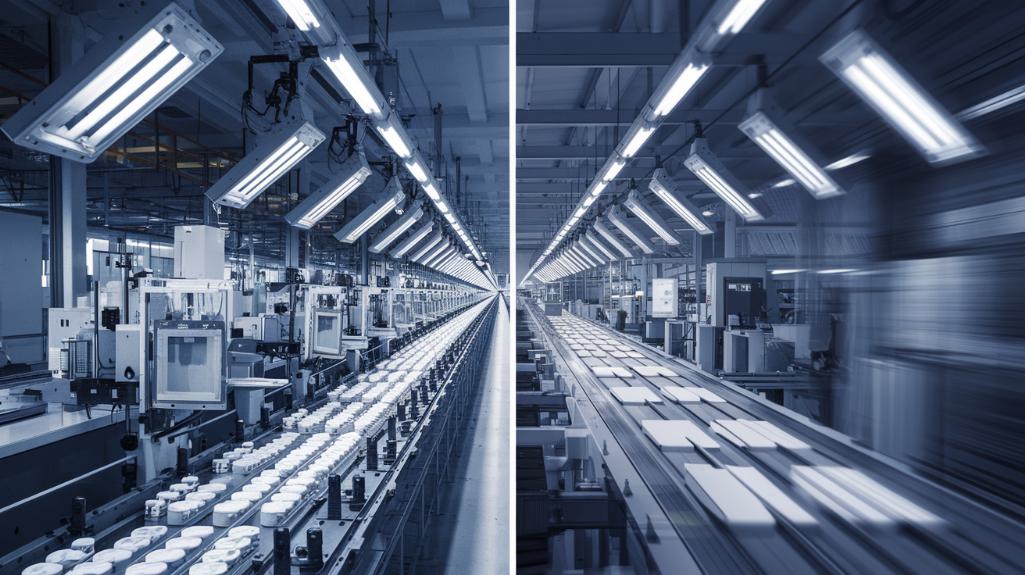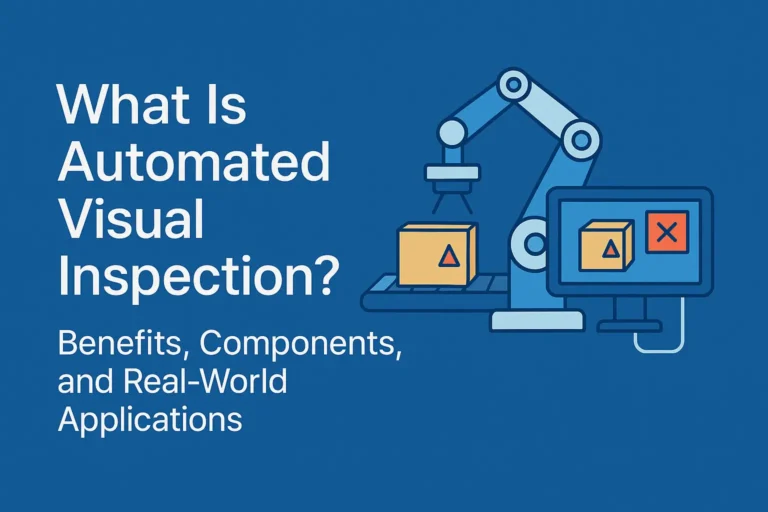Machine vision has been an essential tool in industrial automation for decades, enabling automated quality control, defect detection, and process optimization. However, with advancements in artificial intelligence (AI), a new approach—AI vision—has emerged, offering greater flexibility and adaptability in real-world applications. While traditional machine vision relies on rule-based programming and fixed models, AI vision leverages deep learning to enhance accuracy and performance in complex environments.
This article explores the core differences between these two technologies, their implementation methods, and their respective advantages in industrial settings.
Key Takeaways
- Traditional machine vision is based on predefined rules, geometric models, and manual parameter tuning, making it effective for structured, predictable environments.
- AI vision utilizes deep learning models, such as convolutional neural networks (CNNs), to automatically extract features from images, allowing it to adapt to variable and dynamic conditions.
- Traditional machine vision systems operate with minimal data and rely on explicit programming, while AI vision requires large datasets for training but improves when continuously fine-tuned with updated data.
- Processing speeds vary: traditional machine vision can exceed 60 FPS in real-time industrial applications, while AI vision typically runs at 30+ FPS, depending on model complexity and hardware optimization.
- Traditional vision excels in high-speed, rule-based inspections, whereas AI vision is superior for complex defect detection, adaptive learning, and variable environments.
Core Technology Fundamentals
Traditional machine vision relies on a combination of hardware and rule-based algorithms. It employs various camera types, including CCD, CMOS, infrared, and time-of-flight (ToF) sensors, to capture images. These images are analyzed using feature extraction techniques such as edge detection, thresholding, and pattern recognition. The systems are designed to work within controlled environments where variables like lighting, positioning, and object appearance remain relatively constant.
In contrast, AI vision uses deep learning models to process image data. Instead of relying on manually defined rules, AI-based systems learn from large labeled datasets to classify objects, detect anomalies, and recognize patterns. These models run on GPUs or TPUs, allowing for efficient processing of visual information. AI vision systems extract meaningful features from images using deep learning models, converting raw pixels into structured feature representations for analysis.
Processing Methods and Performance
The fundamental difference between traditional machine vision and AI vision lies in how they process and interpret visual data:
| Feature | Traditional Machine Vision | AI Vision |
|---|---|---|
| Feature Extraction | Uses hand-engineered rules (e.g., edge detection, geometric matching) | Uses deep learning to extract features automatically |
| Processing Speed | Typically 60+ FPS in structured environments but depends on hardware | Usually 30+ FPS, depends on model size & hardware optimization |
| Accuracy | High accuracy (98-99%) in controlled conditions | High accuracy (94%+) in variable conditions when properly trained |
| Adaptability | Works best in stable environments | Adapts to changing conditions, lighting, and variations |
| Hardware Requirements | Runs on CPUs and embedded processors | Requires GPUs or edge AI accelerators |
| Implementation Complexity | Requires manual tuning for each new product | Requires large datasets for initial training and periodic retraining |
Traditional machine vision operates efficiently in high-speed production lines where defects or patterns follow predefined characteristics. These systems can achieve sub-millisecond response times when optimized. However, they struggle when dealing with unexpected variations or complex defect types that were not explicitly programmed.
AI vision, on the other hand, excels in applications where product variations, unpredictable defects, and environmental changes occur. By continuously learning from new data, AI-based vision improves when fine-tuned, reducing the need for frequent manual recalibration.
Data Requirements and Handling
| Aspect | Traditional Machine Vision | AI Vision |
|---|---|---|
| Data Needs | Works well with small datasets | Requires large labeled datasets for training and ongoing fine-tuning |
| Training Effort | Minimal (predefined rules) | High (data labeling, model tuning, and periodic retraining) |
| Scalability | Limited to specific tasks | Can generalize to multiple tasks with retraining |
| Error Sensitivity | Sensitive to lighting & positioning changes | Learns to adapt to environmental variations |
Traditional machine vision requires minimal data, as it follows fixed rules. However, these rules need manual adjustments when a product design changes. AI vision requires extensive labeled datasets but can generalize and improve performance when retrained, making it more suitable for applications with variability.
Implementation Challenges and Hybrid Approaches
While AI vision offers significant advantages, both approaches have limitations:
- Traditional vision struggles with adaptability but is highly optimized for speed.
- AI vision requires extensive labeled data and computational power but learns dynamically.
Hybrid solutions are emerging, where rule-based systems pre-process images before sending them to AI models for advanced decision-making. This approach combines the speed of traditional methods with the adaptability of AI, offering a balanced, scalable solution.
Future Trends and Industry Impact
- AI-driven vision systems are expected to see 11.7% CAGR growth through 2030, as manufacturers adopt smarter quality control solutions.
- Edge AI computing will allow real-time AI processing without cloud dependencies, reducing latency.
- Hybrid AI + traditional vision systems will continue to improve defect detection efficiency while optimizing performance.
Conclusion
Traditional machine vision and AI vision represent two distinct but complementary approaches to industrial automation. Traditional vision excels in high-speed, rule-based inspections, while AI vision provides greater adaptability and intelligence for dynamic applications. As AI vision technology advances, manufacturers and automation integrators will increasingly adopt hybrid models that combine the strengths of both approaches to achieve optimal efficiency and accuracy in industrial automation.

